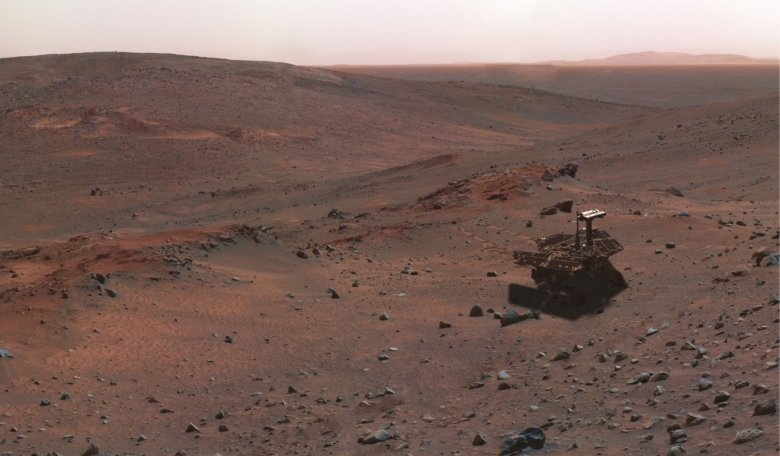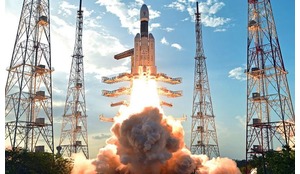Characterising the surface of a planet with a land area equal to that of Earth is no mean feat but that is the task that lies before scientists seeking to understand the geologic history of Mars. Wheels on the ground, in the shape of the three Mars rovers, Spirit, Opportunity and Curiosity, have provided the opportunity for up-close views of the geology of the red planet, supplementing the global view of Mars provided by orbiting sensors and helping to establish a picture of how it has been shaped and changed by water since its early history.
The task of mapping and understanding Mars has been greatly aided by the extensive orbital remote sensing of the planet provided by a series of spacecraft dating back to the Mariner 9 mission which began its orbital reconnaissance of Mars in 1971. But ground level exploration of the planet is a more recent endeavour, beginning with the very limited roving of the breadbox-sized Sojourner rover that accompanied the Mars Pathfinder lander mission of 1997.
In terms of serious roving capabilities, the surface exploration of Mars has been restricted to just three locations, and while the Opportunity rover has traversed more than the equivalent of a marathon race (42.19 km) over the course of its extended mission (January 2004 to the present day), in terms of the total surface area of Mars this is just a stroll around the neighbourhood.
While trying to draw conclusions about the nature of Mars based on the traverses of three rovers means that a lot about the planet is bound to be missed, the fact that the two Mars Exploration Rovers (MERs), Spirit and Opportunity, and the Mars Science Laboratory rover, Curiosity, were targeted to distinctly different geologic settings has broadened our understanding of both the geologic persity of early Mars and the action of common processes.
Find out more about using rovers for Mars exploration in the full version of the article, available now to our subscribers.














